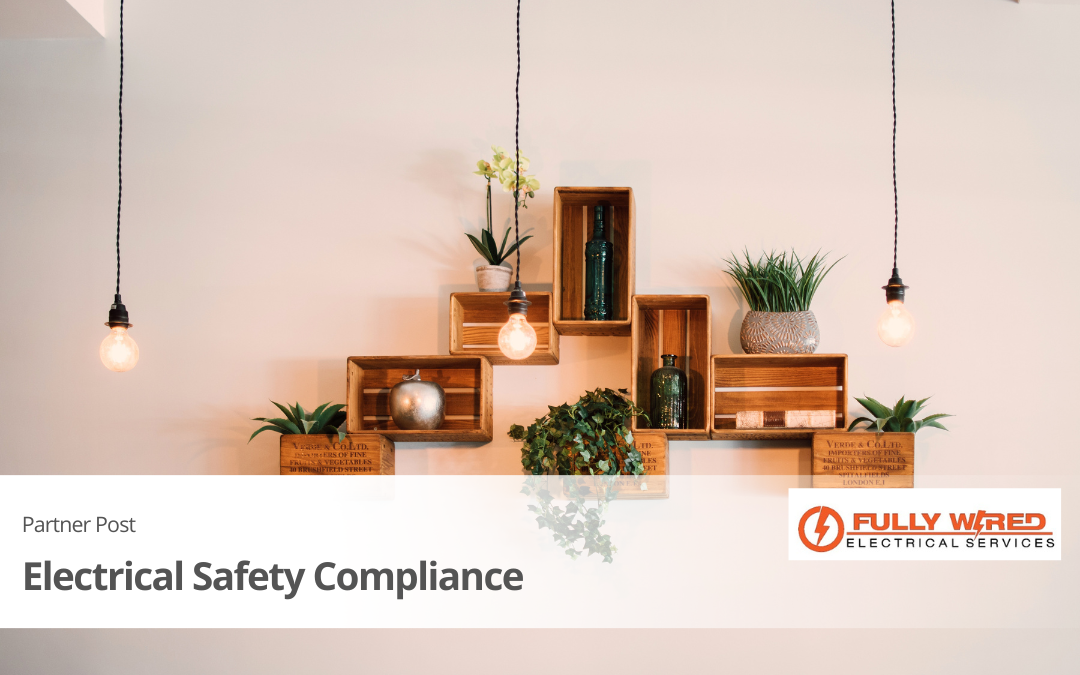This month, we have partnered with Fully Wire Electrical to clarify some important electrical items around your complex that need to be tested and inspected to ensure safety compliance.
Electrical safety compliance is a legal responsibility by which Body Corporates are to ensure is maintained. The following outlines each of the areas of electrical which need to be inspected and tested to ensure they are compliant:
Emergency Lighting
An emergency light is a battery-operated lighting device that switches on automatically when a building experiences a power outage. It includes singular lights and exit signs.
The Australian Standard (AS/NZS 2293.2:2019) outlines that periodic inspection procedures are required for all emergency evacuation lighting so that they are ready and working at all times. The standard states that common areas, such as unit buildings or anywhere that has central and single emergency lighting, must be completed no greater than every six months.
Outcomes for the Body Corporate:
- Meets legal requirements and insurance criteria
- Provides guidance to exits in the event of a power outage, fire or other emergency
- Regular scheduled visits allow for early fault detection and rectification, providing a safer environment and reducing the potential for larger rectification costs.
Communal Smoke Alarms
Smoke Alarms are a vital safety component for all properties as it quickly alerts occupants of danger using a loud alarm. Smoke alarms have expiry dates, and it is the responsibility of the Body Corporate to ensure the smoke alarm is serviced regularly and placed before it expires.
The bodies corporate must abide by strict fire safety regulations customised to the building. If the building does not have a plan in place, one can be created by your regular fire compliance company.
Outcomes for the Body Corporate:
- Meets legal requirements and insurance criteria
- Give peace of mind and removes the risk from the BC Manager and Owners
- Regular scheduled visits allows for early fault detection and rectification, providing a safer environment and reducing the potential for larger rectification costs
Switchboard Inspection and Safety Switch Testing
This Australian Standard (AS 3019 -2007) refers to the periodic verification for electrical services within common areas to be completed. Currently there is no legislation stating how frequent the switchboard inspection/testing needs to occur, however it a strong recommendation that all Body Corporates complete switchboard inspections every 2 years as a minimum as it a critical piece of infrastructure for the supply of power.
Safety switches must be tested in accordance with AS/NZ 3760:2010, which specifies that inspection and test must be completed every 6mths (push button) and 2 years (operating time test).
Outcomes for the Body Corporate:
- Meets legal requirements and insurance criteria
- Duty of care of the asset as well as the residents and visitors
- Most older building switchboards are no longer compliant with today’s standard and can be a danger due to the common day load occupants may put on the board
- Safety switches are what can save lives by instantly turning the power off to the circuit in the event of a fault
Communal Area Lighting
Currently there is no legislation, however communal area lighting is important as residents and visitors use the lights to easily and safely find their way around the building. For insurance reasons, it is advisable that all communal lighting is adequate, and in working order at all times.
Outcomes for the Body Corporate:
- Safety of residents and visitors to the building so they can see steps, obstructions, walkways, etc, reducing the chance of any incidents
- Higher security of residents and deters potential threats
- Pride in building as the lighting fittings and appearance of building is clean, bright and welcoming
Information provided by Fully Wired Electrical Services Pty Ltd 2022.
